Motorized Hurricane Screen
Why Maxforce

MAXFORCE PROVEN PROTECT
Engineered For Excellence
For nearly two decades, MaxForce has manufactured hurricane screens to meet the most demanding building code, the High Velocity Hurricane Zone of Miami-Dade. The MaxForce track is our newest version of the fixed track we have used with great success for high wind applications all over the globe.
The benefits of a fixed track are unmatched strength - this is important when designing a screen system for hurricanes. When you want the strongest system available, and a proven veteran of many hurricanes, the MaxForce Hurricane Track is your best choice.
MAXFORCE THE #1 MOTORIZED HURRICANE SCREEN
Contact A+ Certified MaxForce Screen Dealer Today...
MAXFORCE HURRICANE SCREENS
Engineering Features

No blowouts. No rewraps. No frustration.
MaxForce is the only retractable screen system on the market designed to stay locked in the track—even in high winds. Smart motor senses resistance and adjusts seamlessly, allowing self-correction when the screen encounters an obstacle: Fewer snags, fewer jams, and fewer costly service calls.
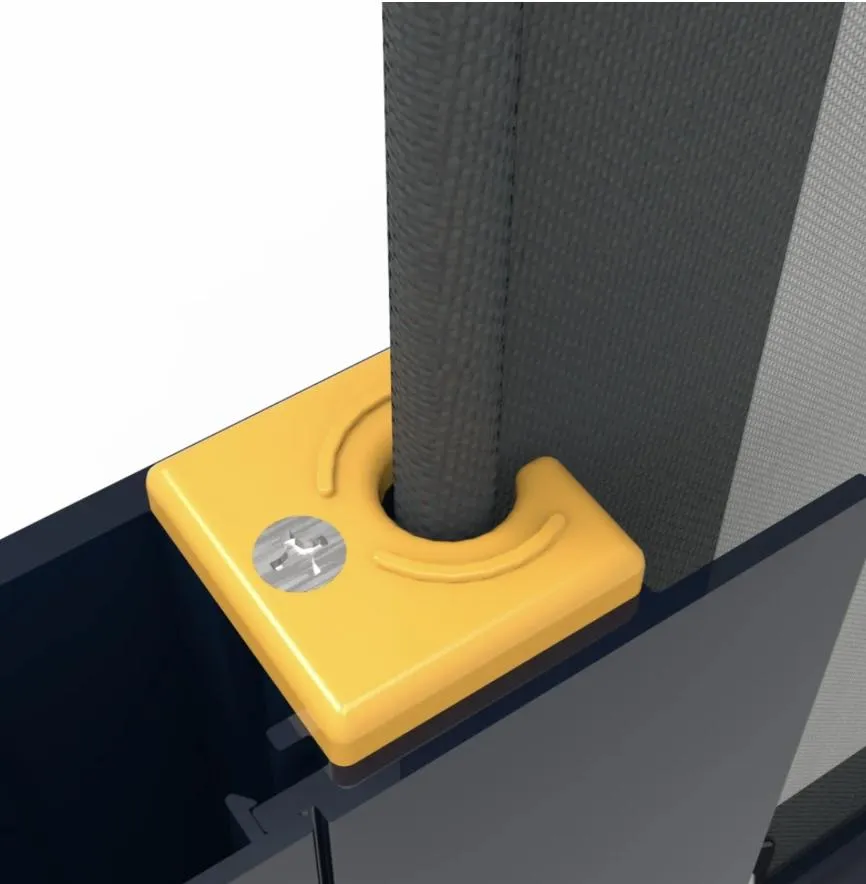
No Zipper. No Cable. Just Simple Deployment
MaxForce pioneered Keder-edge technology in motorized screens, delivering unmatched durability and simplicity. Borrowed from sailboat rigging, this system eliminates zippers, cables, and exposed hardware—ensuring smooth, reliable operation every time.
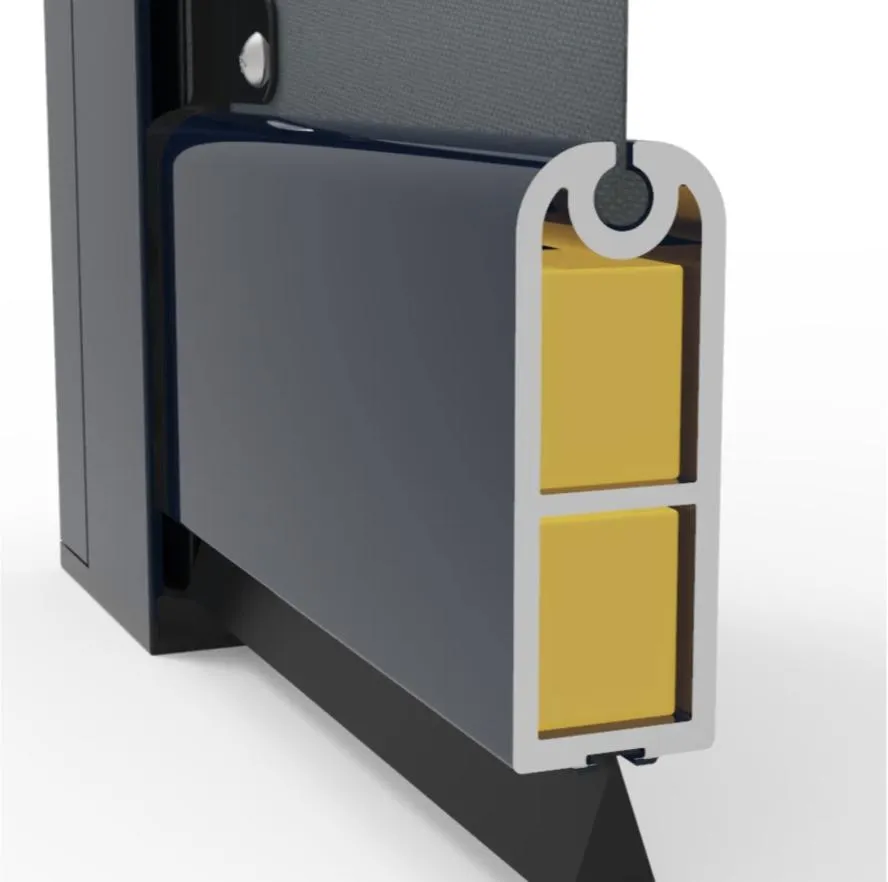
Heavy Duty
The MaxForce weight bar is engineered for strength—and built to hold its ground. Pound for pound, it’s the heaviest and most robust weight bar in the industry. This ensures proper screen tension, flawless deployment, and maximum stability in high wind zones. —limited flex, no failure.
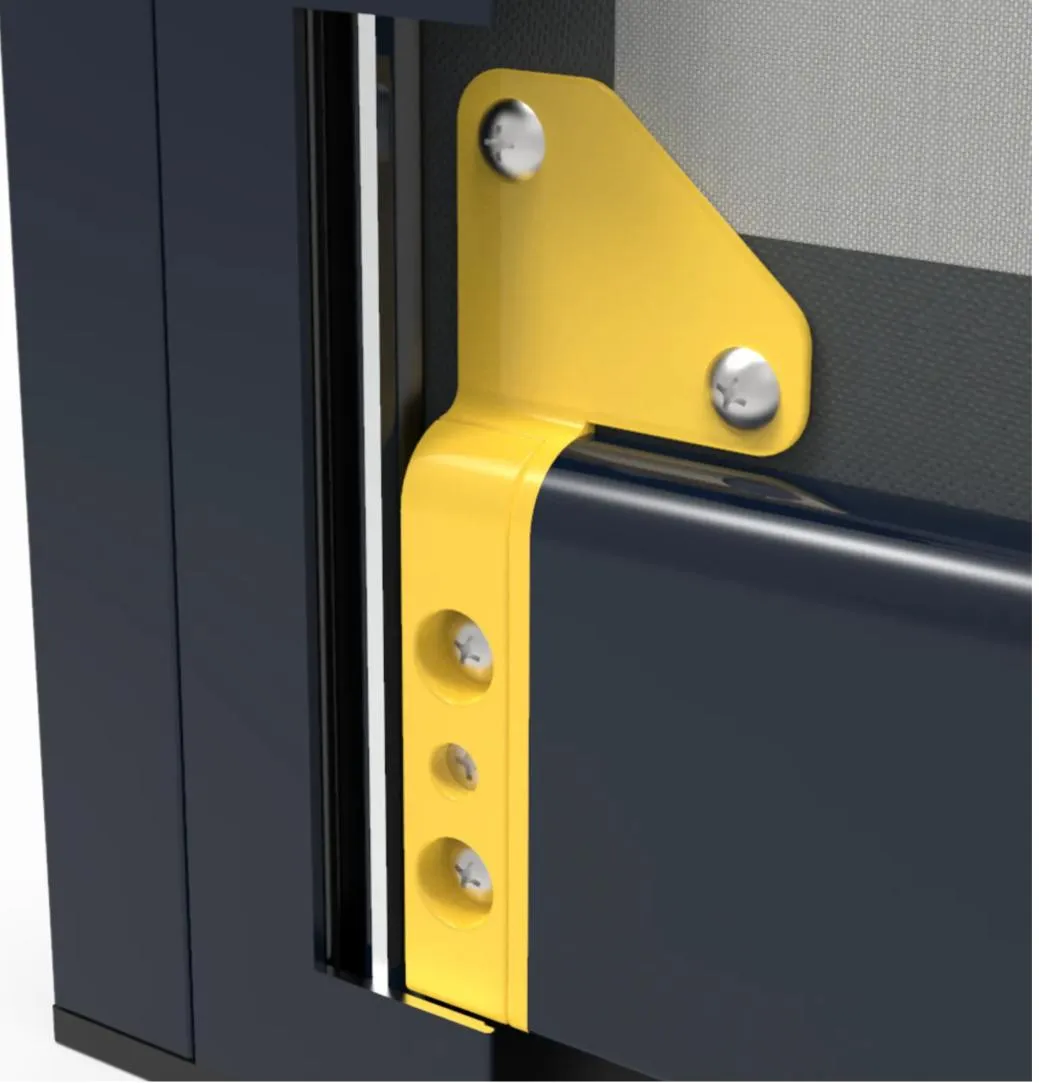
Reinforced Corners
MaxForce’s heavy-duty weight bar isn’t just strong. It’s smart. Reinforced corners and integrated tie-ins create a unified structure that acts like a solid wall of protection when deployed. Made from high-strength nylon, this bar absorbs impacts while maintaining structural integrity.
Motorized Hurricane Screen
Why Maxforce

MAXFORCE PROVEN PROTECT
Engineered For Excellence

For nearly two decades, MaxForce has manufactured hurricane screens to meet the most demanding building code, the High Velocity Hurricane Zone of Miami-Dade. The MaxForce track is our newest version of the fixed track we have used with great success for high wind applications all over the globe.
The benefits of a fixed track are unmatched strength - this is important when designing a screen system for hurricanes. When you want the strongest system available, and a proven veteran of many hurricanes, the MaxForce Hurricane Track is your best choice.
MAXFORCE THE #1 MOTORIZED
HURRICANE SCREEN
Contact A+ Certified MaxForce Screen
Dealer Today...
MAXFORCE HURRICANE SCREENS
Engineering Features

No blowouts. No rewraps.
No frustration.
MaxForce is the only retractable screen system on the market designed to stay locked in the track—even in high winds. Smart motor senses resistance and adjusts seamlessly, allowing self-correction when the screen encounters an obstacle: Fewer snags, fewer jams, and fewer costly service calls.

No Zipper. No Cable.
Just Simple Deployment
MaxForce pioneered Keder-edge technology in motorized screens, delivering unmatched durability and simplicity. Borrowed from sailboat rigging, this system eliminates zippers, cables, and exposed hardware—ensuring smooth, reliable operation every time.

Heavy Duty
The MaxForce weight bar is engineered for strength—and built to hold its ground. Pound for pound, it’s the heaviest and most robust weight bar in the industry. This ensures proper screen tension, flawless deployment, and maximum stability in high wind zones. —limited flex, no failure.

Reinforced Corners
MaxForce’s heavy-duty weight bar isn’t just strong. It’s smart. Reinforced corners and integrated tie-ins create a unified structure that acts like a solid wall of protection when deployed. Made from high-strength nylon, this bar absorbs impacts while maintaining structural integrity.

HEADACHE-FREE
Exclusive self-tensioning system eliminates 99.9% of screen issues. No track adjustments, broken zippers, or dislodged screens.

LIFETIME WARRANTY
Exterior shade screens reduce cooling bills and MaxForce hurricane screens reduce insurance premiums in hurricane zones.

HURRICANE STRONG
Our MaxForce tracks and advanced hybrid ballistic fabrics withstand 150+ mph winds. Approved by Florida Building Commission for hurricane zones. Lab and real-world tested.

BUILT TO LAST
We use marine-grade materials such as powder-coated aluminum, UV-protected nylons, stainless steel fasteners, and premium fabrics. Resists corrosion, rust, and screen failure.

COST-SAVING
Exterior shade screens reduce cooling bills and MaxForce hurricane screens reduce insurance premiums in hurricane zones.

SMART CONTROLS
Control MaxForce screens via remote and
phone or integrate with popular home automation systems for advanced
capabilities.

SECURE TRACK
MaxForce Fix Hurricane Track holds firm under extreme loads

MAX CORROSION PROTECTION
Powder Coated Aluminum Protects your investment from exposer and corrosion.

HEAVY-DUTY DESIGN
Our screens are designed to withstand the extreme. High wind, Rain, or Shine, Dust Dirt, Dander, it doesn't matter. MaxForce Cover it all.

CUSTOM-MADE SCREENS
Tailor-made screens with vast color, fabric, and system options. Custom paint color and fabric matching are available.
MAXFORCE THE #1 MOTORIZED HURRICANE SCREEN
Contact A+ Certified MaxForce Screen Dealer Today...

HEADACHE-FREE
Exclusive self-tensioning system eliminates 99.9% of screen issues.
No track adjustments, broken zippers,
or dislodged screens.

LIFETIME WARRANTY
Exterior shade screens reduce cooling
bills and MaxForce hurricane screens
reduce insurance premiums in
hurricane zones.

HURRICANE STRONG
Our MaxForce tracks and advanced hybrid ballistic fabrics withstand
150+ mph winds. Approved by Florida Building Commission for hurricane
zones. Lab and real-world tested.

BUILT TO LAST
We use marine-grade materials such
as powder-coated aluminum, UV-protected nylons, stainless steel
fasteners, and premium fabrics. Resists corrosion, rust, and screen failure.

COST-SAVING
Exterior shade screens reduce cooling
bills and MaxForce hurricane screens
reduce insurance premiums in
hurricane zones.

SMART CONTROLS
Control MaxForce screens via remote and
phone or integrate with popular home automation systems for advanced
capabilities.

SECURE TRACK
MaxForce Fix Hurricane Track holds firm under extreme loads

MAX CORROSION PROTECTION
Powder Coated Aluminum Protects your investment from exposer and corrosion.

HEAVY-DUTY DESIGN
Our screens are designed to withstand
the extreme. High wind, Rain, or Shine,
Dust Dirt, Dander, it doesn't matter. MaxForce Cover it all.

CUSTOM-MADE SCREENS
Tailor-made screens with vast color, fabric, and system options. Custom
paint color and fabric matching are available.
MAXFORCE THE #1 MOTORIZED
HURRICANE SCREEN
Contact A+ Certified MaxForce Screen
Dealer Today...
MAXFORCE
Ready For Life's Storms

MAXFORCE HURRICANE SCREEN SYSTEM
A Certified, Tested System...
The MaxForce Hurricane Screen System meets or exceeds Miami-Dade and Florida Building Code requirements—the toughest hurricane codes on earth—for roll-down hurricane screens. Rated for the 185 MPH wind zone, and with real-world and certified testing. With spans of up to 25 feet, they exceed performance criteria for all local and International Building Codes.
MAXFORCE THE #1 MOTORIZED HURRICANE SCREEN
Contact A+ Certified MaxForce Screen Dealer Today...
MAXFORCE
Ready For Life's Storms

MAXFORCE HURRICANE SCREEN SYSTEM
A Certified, Tested System...
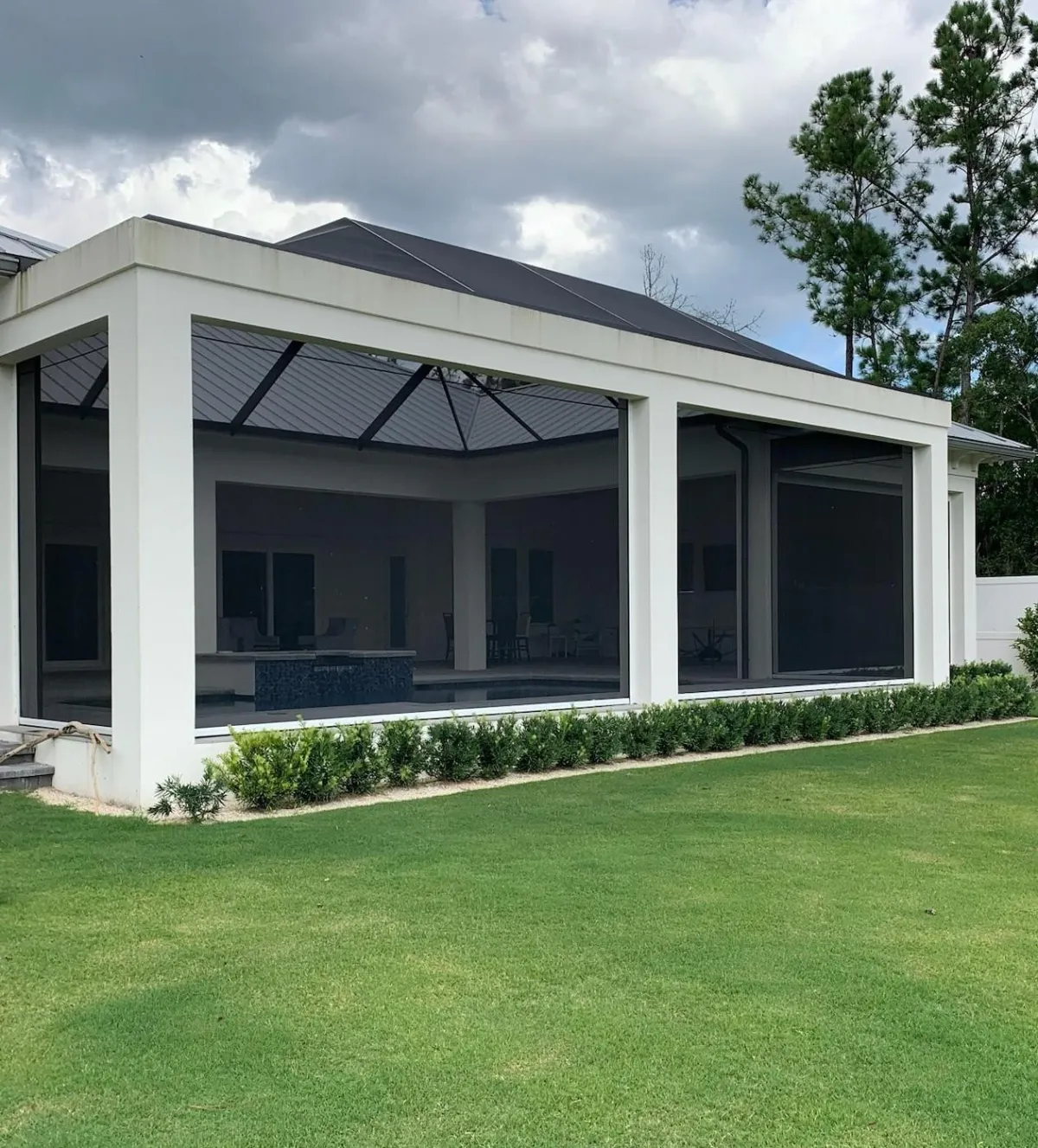
The MaxForce Hurricane Screen System meets or exceeds Miami-Dade and Florida Building Code requirements—the toughest hurricane codes on earth—for roll-down hurricane screens. Rated for the 185 MPH wind zone, and with real-world and certified testing. With spans of up to 25 feet, they exceed performance criteria for all local and International Building Codes.
MAXFORCE THE #1 MOTORIZED
HURRICANE SCREEN
Contact A+ Certified MaxForce Screen
Dealer Today...
THE MAXFORCE DIFFERENCE
Maxforce Hurricane Screen
THE MAXFORCE DIFFERENCE
MaxForce Hurricane Screen
MaxForce Hurricane Screens, powered by our MaxForce system, meet the toughest standards—including HVHZ certification in Miami-Dade and Broward. They last longer, resist more, and do more than any screen on the market—proven protection without compromise.
MaxForce Hurricane Screens —Delivers 365 days of perfect protection, rain or shine, on your patio and lanai. With the push of a button or a tap on the mobile app, your patio is storm-ready— furniture and openings fully protected in seconds.
MaxForce Hurricane Screens fabric blocks up to 95% of the sun’s damaging UV-rays while shielding against wind, rain, insects, dust, and debris. It also helps reduce heat and lower energy costs by limiting solar exposure—comfort and protection in one smart solution.
Like all Fenetex products, our MaxForce Hurricane Screens are highly customizable and built to order—made to fit your exact openings. No guesswork, no compromises—just precision-fit protection tailored to your space.
Pair our retractable MaxForce Hurricane Screens with other Fenetex screens for customized and independent solutions. Each screen operates independently, giving you the protection you want when you need it.
MaxForce Hurricane Screens offer built-in privacy without blocking your view. Like a two-way mirror, you can see out—but neighbors and passersby can not see in. It provides the perfect blend of openness and seclusion, day or night.
MAXFORCE THE #1 MOTORIZED HURRICANE SCREEN
Contact A+ Certified MaxForce Screen Dealer Today...
INTEGRITY MATTERS
How MaxForce Is Made Matters
MaxForce Hurricane Screens, powered by our MaxForce system, meet the toughest standards—including HVHZ certification in Miami-Dade and Broward. They last longer, resist more, and do more than any screen on the market—proven protection without compromise.
.
MaxForce Hurricane Screens —Delivers 365 days of perfect protection, rain or shine, on your patio and lanai. With the push of a button or a tap on the mobile app, your patio is storm-ready— furniture and openings fully protected in seconds.
MaxForce Hurricane Screens fabric blocks up to 95% of the sun’s damaging UV-rays while shielding against wind, rain, insects, dust, and debris. It also helps reduce heat and lower energy costs by limiting solar exposure—comfort and protection in one smart solution.
.
Like all Fenetex products, our MaxForce Hurricane Screens are highly customizable and built to order—made to fit your exact openings. No guesswork, no compromises—just precision-fit protection tailored to your space.
.
Pair our retractable MaxForce Hurricane Screens with other Fenetex screens for customized and independent solutions. Each screen operates independently, giving you the protection you want when you need it.
.
MaxForce Hurricane Screens offer built-in privacy without blocking your view. Like a two-way mirror, you can see out—but neighbors and passersby can not see in. It provides the perfect blend of openness and seclusion, day or night.
.
MAXFORCE THE #1 MOTORIZED
HURRICANE SCREEN
Contact A+ Certified MaxForce Screen
Dealer Today...
INTEGRITY MATTERS
How MaxForce Is
Made Matters
AMERICAN INGENUITY
Made in the USA.
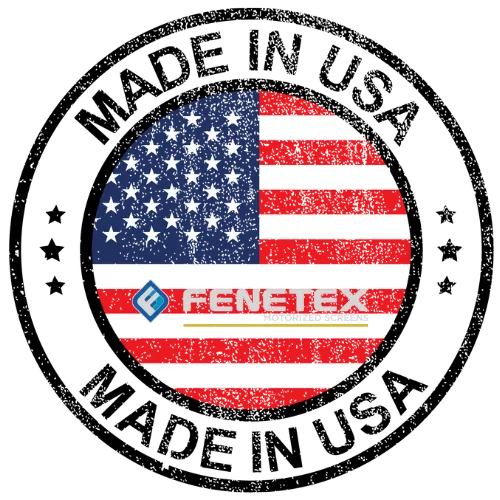
Proudly Made in the USA—every MaxForce screen is built with American strength, precision, and pride. From the smallest components to the final assembly, our materials are sourced and manufactured right here in the United States. No outsourcing. No compromises. Just hardworking Americans protecting American homes with the toughest screen system on the market.
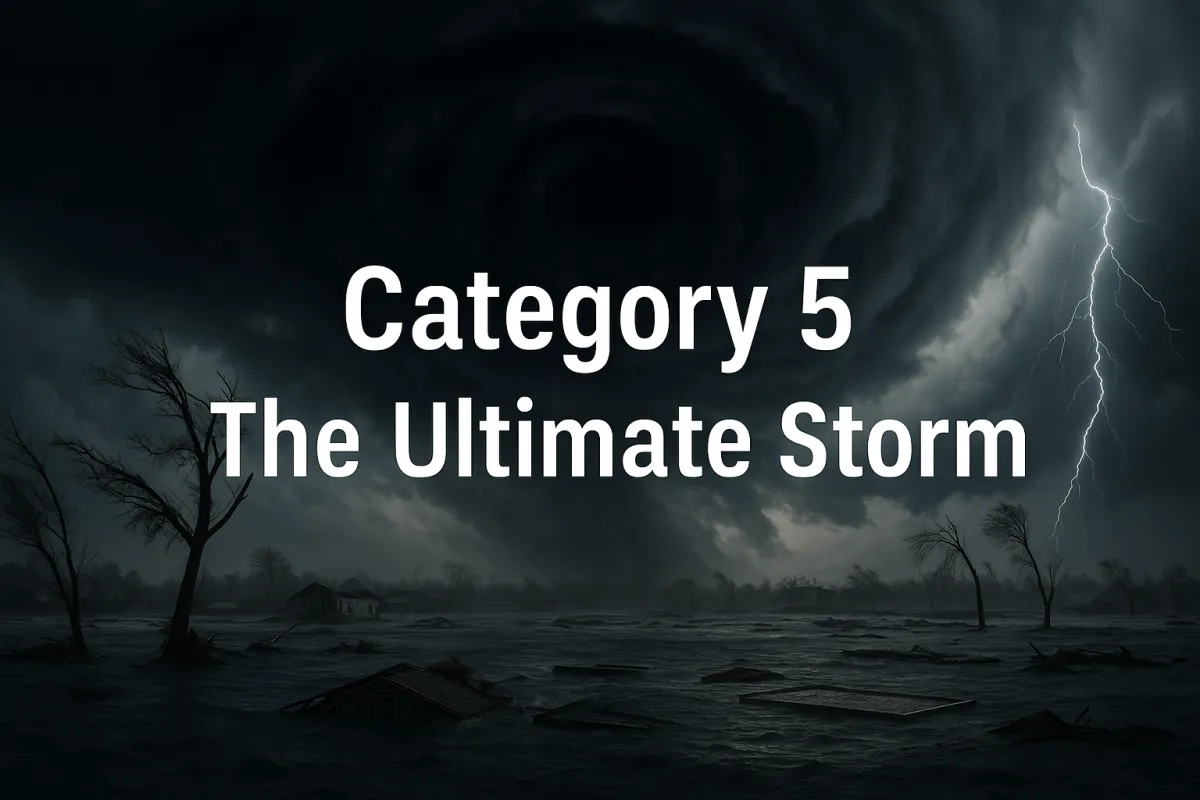
Category 5: The Ultimate Storm
Category 5: The Ultimate Storm
One hundred fifty-seven miles per hour.
That's where the scale stops. Not because hurricanes can't get stronger—they can, and they do. But because at 157 mph and above, the National Hurricane Center's damage description hits its ceiling: "Catastrophic damage will occur."
There's no Category 6. No higher tier. Because when you're describing near-total destruction, more specific labels become meaningless.
Category 5 hurricanes represent the ultimate expression of nature's power. These are storms that obliterate everything in their path. That render entire communities uninhabitable for months. That create humanitarian disasters requiring military intervention. That change coastlines permanently.
Since 1851, only 44 Atlantic hurricanes have reached Category 5 intensity. Of those, only four have made landfall in the continental United States at Category 5 strength: the 1935 Labor Day Hurricane, Hurricane Camille in 1969, Hurricane Andrew in 1992, and Hurricane Michael in 2018.
Four. In over 170 years of recorded history.
This is the ultimate storm. And surviving one requires understanding that at this level, there are no adequate protections—only escape.
The Power Beyond Measure
At 157 mph sustained winds, structures don't just fail. They disintegrate.
A high percentage of frame homes will be destroyed—not damaged, destroyed—with total roof failure and wall collapse. The words aren't "partial" or "severe." They're "total" and "complete." Homes reduced to concrete slabs. Commercial buildings gutted. High-rise windows blown out across entire facades.
Most mobile homes and manufactured housing? Obliterated. Completely. As if they never existed.
Trees? Most will be uprooted or snapped. Power poles downed across entire regions. Fallen debris isolating residential areas for weeks. Power outages lasting weeks to possibly months. Water shortages extending indefinitely.
The National Hurricane Center's official description ends with stark finality: "Most of the area will be uninhabitable for weeks or months."
Not uncomfortable. Not challenging. Uninhabitable.
When Andrew Rewrote Reality
August 24, 1992, 5:00 AM. Hurricane Andrew made landfall on Elliott Key and then Homestead, Florida with 165 mph winds and a central pressure of 922 millibars—the third-lowest pressure ever recorded at U.S. landfall.
The compact Category 5 storm's core passed directly through southern Miami-Dade County. What happened next redefined what hurricanes could do to modern civilization.
Andrew destroyed more than 63,500 houses and damaged another 124,000. In Homestead—ground zero—99% of mobile homes were completely destroyed. Not damaged. Destroyed. Erased. Storm surge reached 16.9 feet near the Burger King in Cutler Ridge, nearly reaching the fourth floor.
The wind stripped homes to their foundations. Street signs, traffic lights, trees—every familiar landmark disappeared. Residents returning home couldn't navigate their own neighborhoods because nothing looked the same.
More than 250,000 people left homeless overnight. Over 1.4 million lost power. Water systems failed. Communication networks collapsed. The area looked like a war zone—buildings reduced to rubble, debris fields stretching for miles, entire communities simply gone.
Andrew caused $25.3 billion in damage in Florida alone—making it the costliest natural disaster in U.S. history at the time, not surpassed until Katrina thirteen years later. Sixty-five people died, though indirect deaths pushed the toll higher.
The storm fundamentally changed South Florida. More than 100,000 residents migrated north to Broward and Palm Beach counties. The demographics of Miami-Dade shifted dramatically. Communities never fully recovered their pre-Andrew character.
Andrew also exposed catastrophic failures in building codes. Lax enforcement and inadequate standards meant homes that should have survived didn't. The disaster prompted complete overhaul of Florida's building regulations. The new Florida Building Code, enacted in 2002, became the model for hurricane-resistant construction nationwide.
Thirty-two years later, Andrew remains the benchmark for Category 5 devastation. Every major hurricane since gets compared to it. Every forecaster who lived through it carries the memory. Every South Florida resident over forty remembers exactly where they were that morning.
The Rarest Monsters
Category 5 hurricanes don't happen often. The conditions required—extremely warm water, minimal wind shear, perfect atmospheric setup—align rarely. Even when they do, most Category 5 storms weaken before landfall.
Of the 44 Atlantic Category 5 hurricanes ever recorded, only four hit the U.S. at Category 5 strength. Most either stayed over open ocean or weakened to Category 3 or 4 before reaching land.
But that's cold comfort when one targets your coastline.
The 1935 Labor Day Hurricane hit the Florida Keys with 185 mph winds and a 20-foot storm surge, killing over 400 people—most of them World War I veterans working on the Overseas Highway. The storm remains the strongest hurricane ever to make U.S. landfall by pressure.
Hurricane Camille struck Mississippi in 1969 with 175 mph winds and a 24-foot storm surge. Entire coastal communities vanished. More than 250 people died. The devastation was so complete that many bodies were never recovered.
Hurricane Michael made landfall near Mexico Beach, Florida in 2018 with 160 mph winds. The small community was essentially erased—homes swept off foundations, buildings reduced to splinters, the landscape unrecognizable.
These storms don't just damage communities. They delete them.
Why Category 5 is Different
The difference between Category 4 and Category 5 isn't incremental. It's existential.
Category 4 storms cause catastrophic damage. Category 5 storms cause total destruction. The gap between those two concepts—catastrophic versus total—represents the difference between communities that can rebuild and communities that cease to exist as functioning entities.
At Category 4, some structures survive. At Category 5, almost nothing does. At Category 4, infrastructure can be repaired. At Category 5, it must be completely rebuilt. At Category 4, communities suffer. At Category 5, they're erased.
The wind forces at 157+ mph exceed what residential construction—even the most hardened—can withstand. Impact windows shatter. Hurricane screens fail. Reinforced roofs tear away. Concrete structures sustain severe damage. Nothing built for human habitation remains fully intact.
Storm surge compounds the devastation. Category 5 storms push walls of water 18+ feet above normal tide. That's enough to submerge two-story homes entirely. Enough to carry boats miles inland. Enough to reshape coastlines permanently.
No Protection, Only Distance
This is the hardest truth about Category 5 hurricanes: there is no protection adequate to survive one in place.
Hurricane shutters help—until the structure they're attached to fails. Impact windows resist debris—until 165 mph winds tear the entire frame from the wall. Reinforced construction buys time—until the forces exceed engineering tolerances.
At Category 5 intensity, staying in place isn't brave. It's suicidal.
Mandatory evacuations aren't suggestions. They're recognition that emergency services cannot rescue you during the storm. That staying means accepting you're on your own. That survival becomes unlikely for anyone who remains.
When Category 5 threatens, the only protection is evacuation. Getting hundreds of miles inland. Moving to concrete shelters designed for these forces. Leaving before the storm makes evacuation impossible.
The Bottom Line
Category 5 hurricanes are the ultimate expression of hurricane power. Winds of 157 mph and higher. Total roof failure and wall collapse. Most of the area uninhabitable for weeks or months. Near-complete destruction of everything in the core.
Only four have struck the continental United States at Category 5 strength in recorded history. But four have been enough to demonstrate what these storms can do. Andrew alone killed 65 people, destroyed 63,500 homes, left 250,000 homeless, and caused $25 billion in damage.
These aren't storms you prepare for. These are storms you escape from.
When forecasters mention Category 5, they're not describing weather. They're warning about annihilation. About forces that exceed what modern construction can withstand. About winds that turn entire neighborhoods into debris fields.
The scale stops at Category 5 because there's no point in going higher. Total destruction is total destruction. Uninhabitable is uninhabitable. When you're describing the complete elimination of human infrastructure, additional categories add nothing.
If a Category 5 hurricane targets your area, you have one choice: leave.
Not prepare. Not shelter. Not hope your house survives.
Leave.
Because Category 5 is the ultimate storm. And the only way to survive it is to not be there when it arrives.
Previous post: Category 4: Catastrophic Force
Return to series start: What Actually Makes a Hurricane a Hurricane
Additional Resources:
National Hurricane Center - Category 5 Definition - Official classification
List of Category 5 Atlantic Hurricanes - Complete historical record
Ready.gov Hurricane Evacuation - Federal evacuation guidelines
Company
MaxForce Hurricane Screens
Design Ideals
Resources

© 2025 Maxforce - Powered by Fenetex and Friends of Oatis
AMERICAN INGENUITY
Made in the USA
Proudly Made in the USA—every MaxForce screen is built with American strength, precision, and pride. From the smallest components to the final assembly, our materials are sourced and manufactured right here in the United States. No outsourcing. No compromises. Just hardworking Americans protecting American homes with the toughest screen system on the market.

Category 5: The Ultimate Storm
Category 5: The Ultimate Storm
One hundred fifty-seven miles per hour.
That's where the scale stops. Not because hurricanes can't get stronger—they can, and they do. But because at 157 mph and above, the National Hurricane Center's damage description hits its ceiling: "Catastrophic damage will occur."
There's no Category 6. No higher tier. Because when you're describing near-total destruction, more specific labels become meaningless.
Category 5 hurricanes represent the ultimate expression of nature's power. These are storms that obliterate everything in their path. That render entire communities uninhabitable for months. That create humanitarian disasters requiring military intervention. That change coastlines permanently.
Since 1851, only 44 Atlantic hurricanes have reached Category 5 intensity. Of those, only four have made landfall in the continental United States at Category 5 strength: the 1935 Labor Day Hurricane, Hurricane Camille in 1969, Hurricane Andrew in 1992, and Hurricane Michael in 2018.
Four. In over 170 years of recorded history.
This is the ultimate storm. And surviving one requires understanding that at this level, there are no adequate protections—only escape.
The Power Beyond Measure
At 157 mph sustained winds, structures don't just fail. They disintegrate.
A high percentage of frame homes will be destroyed—not damaged, destroyed—with total roof failure and wall collapse. The words aren't "partial" or "severe." They're "total" and "complete." Homes reduced to concrete slabs. Commercial buildings gutted. High-rise windows blown out across entire facades.
Most mobile homes and manufactured housing? Obliterated. Completely. As if they never existed.
Trees? Most will be uprooted or snapped. Power poles downed across entire regions. Fallen debris isolating residential areas for weeks. Power outages lasting weeks to possibly months. Water shortages extending indefinitely.
The National Hurricane Center's official description ends with stark finality: "Most of the area will be uninhabitable for weeks or months."
Not uncomfortable. Not challenging. Uninhabitable.
When Andrew Rewrote Reality
August 24, 1992, 5:00 AM. Hurricane Andrew made landfall on Elliott Key and then Homestead, Florida with 165 mph winds and a central pressure of 922 millibars—the third-lowest pressure ever recorded at U.S. landfall.
The compact Category 5 storm's core passed directly through southern Miami-Dade County. What happened next redefined what hurricanes could do to modern civilization.
Andrew destroyed more than 63,500 houses and damaged another 124,000. In Homestead—ground zero—99% of mobile homes were completely destroyed. Not damaged. Destroyed. Erased. Storm surge reached 16.9 feet near the Burger King in Cutler Ridge, nearly reaching the fourth floor.
The wind stripped homes to their foundations. Street signs, traffic lights, trees—every familiar landmark disappeared. Residents returning home couldn't navigate their own neighborhoods because nothing looked the same.
More than 250,000 people left homeless overnight. Over 1.4 million lost power. Water systems failed. Communication networks collapsed. The area looked like a war zone—buildings reduced to rubble, debris fields stretching for miles, entire communities simply gone.
Andrew caused $25.3 billion in damage in Florida alone—making it the costliest natural disaster in U.S. history at the time, not surpassed until Katrina thirteen years later. Sixty-five people died, though indirect deaths pushed the toll higher.
The storm fundamentally changed South Florida. More than 100,000 residents migrated north to Broward and Palm Beach counties. The demographics of Miami-Dade shifted dramatically. Communities never fully recovered their pre-Andrew character.
Andrew also exposed catastrophic failures in building codes. Lax enforcement and inadequate standards meant homes that should have survived didn't. The disaster prompted complete overhaul of Florida's building regulations. The new Florida Building Code, enacted in 2002, became the model for hurricane-resistant construction nationwide.
Thirty-two years later, Andrew remains the benchmark for Category 5 devastation. Every major hurricane since gets compared to it. Every forecaster who lived through it carries the memory. Every South Florida resident over forty remembers exactly where they were that morning.
The Rarest Monsters
Category 5 hurricanes don't happen often. The conditions required—extremely warm water, minimal wind shear, perfect atmospheric setup—align rarely. Even when they do, most Category 5 storms weaken before landfall.
Of the 44 Atlantic Category 5 hurricanes ever recorded, only four hit the U.S. at Category 5 strength. Most either stayed over open ocean or weakened to Category 3 or 4 before reaching land.
But that's cold comfort when one targets your coastline.
The 1935 Labor Day Hurricane hit the Florida Keys with 185 mph winds and a 20-foot storm surge, killing over 400 people—most of them World War I veterans working on the Overseas Highway. The storm remains the strongest hurricane ever to make U.S. landfall by pressure.
Hurricane Camille struck Mississippi in 1969 with 175 mph winds and a 24-foot storm surge. Entire coastal communities vanished. More than 250 people died. The devastation was so complete that many bodies were never recovered.
Hurricane Michael made landfall near Mexico Beach, Florida in 2018 with 160 mph winds. The small community was essentially erased—homes swept off foundations, buildings reduced to splinters, the landscape unrecognizable.
These storms don't just damage communities. They delete them.
Why Category 5 is Different
The difference between Category 4 and Category 5 isn't incremental. It's existential.
Category 4 storms cause catastrophic damage. Category 5 storms cause total destruction. The gap between those two concepts—catastrophic versus total—represents the difference between communities that can rebuild and communities that cease to exist as functioning entities.
At Category 4, some structures survive. At Category 5, almost nothing does. At Category 4, infrastructure can be repaired. At Category 5, it must be completely rebuilt. At Category 4, communities suffer. At Category 5, they're erased.
The wind forces at 157+ mph exceed what residential construction—even the most hardened—can withstand. Impact windows shatter. Hurricane screens fail. Reinforced roofs tear away. Concrete structures sustain severe damage. Nothing built for human habitation remains fully intact.
Storm surge compounds the devastation. Category 5 storms push walls of water 18+ feet above normal tide. That's enough to submerge two-story homes entirely. Enough to carry boats miles inland. Enough to reshape coastlines permanently.
No Protection, Only Distance
This is the hardest truth about Category 5 hurricanes: there is no protection adequate to survive one in place.
Hurricane shutters help—until the structure they're attached to fails. Impact windows resist debris—until 165 mph winds tear the entire frame from the wall. Reinforced construction buys time—until the forces exceed engineering tolerances.
At Category 5 intensity, staying in place isn't brave. It's suicidal.
Mandatory evacuations aren't suggestions. They're recognition that emergency services cannot rescue you during the storm. That staying means accepting you're on your own. That survival becomes unlikely for anyone who remains.
When Category 5 threatens, the only protection is evacuation. Getting hundreds of miles inland. Moving to concrete shelters designed for these forces. Leaving before the storm makes evacuation impossible.
The Bottom Line
Category 5 hurricanes are the ultimate expression of hurricane power. Winds of 157 mph and higher. Total roof failure and wall collapse. Most of the area uninhabitable for weeks or months. Near-complete destruction of everything in the core.
Only four have struck the continental United States at Category 5 strength in recorded history. But four have been enough to demonstrate what these storms can do. Andrew alone killed 65 people, destroyed 63,500 homes, left 250,000 homeless, and caused $25 billion in damage.
These aren't storms you prepare for. These are storms you escape from.
When forecasters mention Category 5, they're not describing weather. They're warning about annihilation. About forces that exceed what modern construction can withstand. About winds that turn entire neighborhoods into debris fields.
The scale stops at Category 5 because there's no point in going higher. Total destruction is total destruction. Uninhabitable is uninhabitable. When you're describing the complete elimination of human infrastructure, additional categories add nothing.
If a Category 5 hurricane targets your area, you have one choice: leave.
Not prepare. Not shelter. Not hope your house survives.
Leave.
Because Category 5 is the ultimate storm. And the only way to survive it is to not be there when it arrives.
Previous post: Category 4: Catastrophic Force
Return to series start: What Actually Makes a Hurricane a Hurricane
Additional Resources:
National Hurricane Center - Category 5 Definition - Official classification
List of Category 5 Atlantic Hurricanes - Complete historical record
Ready.gov Hurricane Evacuation - Federal evacuation guidelines
Company
MaxForce Hurricane Screens
Design Ideals
Resources

© 2025 Maxforce - Powered by Fenetex and Friends of Oatis

